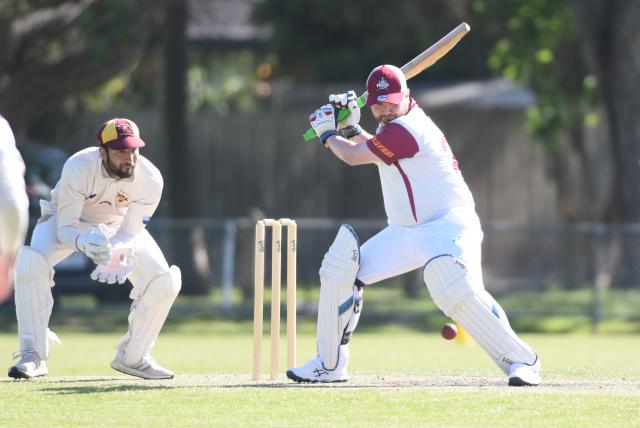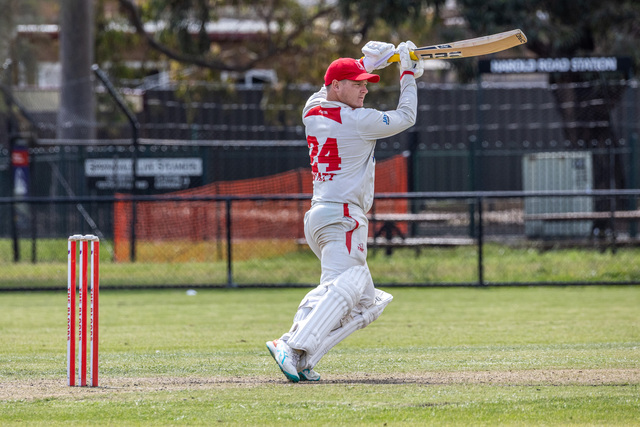By Amanda Dunn/The Age
WHAT DO YOU THINK? SCROLL TO BELOW THIS STORY TO POST A COMMENT.
IN DANDENONG High’s battered old school hall – in line to be redeveloped and not a moment too soon – principal Martin Culkin gathers his staff for a meeting. A neat man with silver hair, matching beard and an air of steeliness about him, Culkin talks about the usual things: tomorrow’s swimming sports; principals from Norway visiting next week; the importance of teachers being punctual; kids smoking behind the trees down the back.
Then Culkin tells them, with some difficulty, that he will retire on the last day of first term. He will be missed. When he has finished speaking, all the teachers stand and applaud him, and deputy principal Sue Ogden lifts her glasses to wipe tears from her eyes.
That Culkin, 62, is ready for a break is hardly surprising: in the past eight years, he has overseen the at-times fraught merger of three flailing schools into a single, largely harmonious one, and survived a health crisis that almost took his life.
With more than 2000 students and 182 teachers, the story of the new Dandenong High is still being written. But the early signs are that this huge school in Melbourne’s outer south-east, which has built schools within schools and turned traditional ideas of classroom teaching on their heads, is starting to fulfil Culkin’s idea of a “transformative” change and, in doing so, give its students a brighter future than they otherwise might have had.
Dandenong High still has plenty to contend with: more than 80 per cent of its 2000 students speak a language other than English at home. At lunchtime, they chatter loudly in English, but also Dari, Sinhalese, Albanian and Tamil, to name a few. A third of the students are refugees, mostly from Afghanistan, Sri Lanka, Cambodia and, increasingly, Africa. Many have had interrupted schooling or no schooling at all; some arrive not only unable to speak a word of English, but completely illiterate.
Dandenong is culturally rich but one of the most disadvantaged areas in Melbourne. Almost 90 per cent of families at the school receive the Education Maintenance Allowance, which means at least one parent is a healthcare card holder. Some cannot afford the uniform or textbooks, and the school helps with all these things.
With a $45 million redevelopment to oversee, Culkin’s job was to create a new school that would offset those complex layers of disadvantage, while merging three schools – one of which was initially reluctant to come on board – into one unified, high-functioning school. To say that it was a big project is an understatement.
”We were confronting issues of uniform, student behaviour, work expectations, basic courtesy to teachers, dynamics with the parents community, the whole box and dice,” Culkin says.
Over the weeks that The Sunday Age spent at the school, sitting in on classes and speaking with students and teachers, the consensus seems to be that it has been a great success.
Of course, the school is not perfect. Its VCE and NAPLAN results are not yet where teachers want them to be, although they are showing improvement: last year, the school lifted its percentage of VCE study scores over 40 to 3.9 per cent from 1.9 per cent the year before, and 47 per cent of the school’s year 12s went on to university, which is higher than the state average and up from 37 per cent in 2007. There are also ongoing issues around punctuality and attendance: while absenteeism at years 7, 8 and 12 is slightly better than the state average, at years 9, 10 and 11 it is slightly worse.
But if the feel of a place is anything to go by, then Culkin and his team have managed to create a school where the students actually want to be, and in which they want to learn. He has done this with a mixture of innovation and discipline, applied equally to students and teachers.
Culkin became principal of the old Dandenong High School in 2000, having been principal at Parkwood Secondary College in Ringwood and, prior to that, one of the last technical school principals at Echuca Tech in Victoria’s north. By 2003, there was a feeling that the schools in the Dandenong area were not performing well enough and something needed to be done.
Backing on to Dandenong High was Cleeland Secondary College, with about 550 students and a large refugee population, including kids from Sudan who had never stepped foot in a school until arriving in Melbourne. Culkin says constant restructuring and experimenting led to some improvement in attendance and results, but it was still not performing as well as it should.
Not far away was the tiny Doveton High School, struggling to get by with just 175 students.
Although academically the strongest and the biggest of the three schools with 1350 students, Dandenong High was also ”just travelling along”. Students were increasingly disengaged and results were not what the teachers wanted them to be. Culkin realised that the school’s set-up, its traditional model of one teacher in front of a class of 25 or so, just wasn’t working.
By the end of 2004, talk of a merger began to percolate from the schools themselves.
The Education Department, under the Bracks government, backed the idea of the three becoming one, although Culkin admits he worked the political system hard to get what he wanted. He lobbied then education minister Lynne Kosky and – more successfully – her successor Bronwyn Pike for the $45 million the redevelopment would need, which was helped by being part of a ”regeneration” project for the Dandenong area.
It was always going to be hard: Doveton accepted its situation was unsustainable, but Cleeland was more resistant. The breakthrough came when a demographic study and a curriculum audit of the three schools showed that not one of them was providing a comprehensive curriculum.
Tentatively, a merger was agreed. Culkin’s old Dandenong High had most to lose from amalgamating with two weaker schools, and he insisted on several conditions before signing on: it should be tough on discipline – a ”good, orderly, high-expectations based school” – it would be called Dandenong High School, and there would be compulsory uniforms. The task ahead of him was to design a new school and merge with two others, while not letting standards slip for the students in his care.
”I was pretty scared about it, to be quite honest,” he says. ”And it wasn’t a very pleasant process.”
The Education Department commissioned an architect to draw up some plans, but Culkin wasn’t happy. He knew that such a complex school would need to do something radical.
So he and the other two principals went on a study tour of the United States, Britain and New Zealand, and the idea of schools within schools – similar to what they had seen at Alfriston College south of Auckland – took hold. He also realised that, particularly for migrant children, being parachuted into a school of 2000 students would be overwhelming.
Eventually, it was decided that there should be seven ”houses” that would each have about 300 students, 25 teachers and function as a quasi-independent school, complete with their own principals. The students are taught in those houses – Banksia, Callistemon, Darwinia, Eucalyptus, Fern, Grevillea and Hakea – for most of their schooling, at least until years 11 and 12, where the broad range of subjects on offer necessarily means forming different teaching groups.
The seven houses, with their dark, clean exteriors, are identical apart from a signature colour – blue for Eucalyptus, orange for Banksia, for example. The classrooms are largely open, with long glass walls facing a central area where students have their lockers and can work at tables. On the other side of the main thoroughfare is the staffroom, which also has glass walls, so students can see teachers at all times, and vice versa.
Within those houses, children are mostly taught in classes of 50 with three teachers, so that they come together as a large class, and then break off into smaller groups for particular exercises.
In a year 10 English class in Eucalyptus house one Thursday afternoon, the students have their heads in some ”quiet reading”. One girl has George Orwell’s Animal Farm open; a boy at the desk behind her is reading a Garry Disher novel. There are 51 students in this “high needs” class across what is effectively two classrooms, with an open partition between them and whiteboards at each end.
There are three regular classroom teachers – one of whom is an English as a Second Language teacher – and two teaching aides, to pay extra attention to students with learning disabilities. About 14 of the students are ESL, and about six are special needs, with some falling into both categories. Teacher Ffion Bowles is leading the lesson today. When she asks the students to stand up and place themselves into groups, the noise goes up, and she and the other two teachers spend much time shushing the students.
At one end of the room is Dilisha Walpola, who takes ballet lessons three days a week and dreams of becoming a dancer in the Australian Ballet. Born in Australia to Sri Lankan parents, Dilisha’s fallback plan is to go to university and study physiotherapy. She likes the three-to-50 model. ”Sometimes it gets too much to handle, but everyone is used to being in a big class,” she says.
Her classmate Robina Ali was born in Afghanistan into a Shia Hazara family, arriving in Melbourne from Pakistan in 2010. Her parents are dead and she lives with two older brothers. About 60 per cent of Dandenong High students are Muslim, and like the other Muslim girls, Robina wears a navy blue hijab and white leggings underneath her long-sleeved summer dress.
When she has finished school she plans to go to university, where she hopes to study science with some arts subjects. ”I am really interested in politics,” she says.
Not everyone likes this way of teaching. Culkin estimates that he has about six teachers who are outspoken in their dislike of the team teaching, and another eight or nine who rail against it more quietly.
”Outspokenness and lack of support of the direction of the school is one thing; teacher competence in the classroom is another thing. Quite often, these people actually can teach. So you’ve got to accept some vocal opposition, and that isn’t all wrong,” he says. A young teacher who does like the new system is Sam Thompson. After excusing himself from his year 11 advanced maths class, he explains that he was drawn to Dandenong High as a graduate teacher two years ago because it aligns with his belief in the power of collaborative learning, for students and teachers.
Still, he admits, ”it’s a challenge to work with other teachers, [such as] marking, for you all to have the same values and expectations within a classroom”. But when it works, it’s great, and he loves the kids: “They are always happy to see you.”
He is constantly amazed that he can reprimand particular students in one lesson, then bump into them later in the day and be greeted warmly, as though nothing has happened.
ONE of the most important aspects of how Culkin has gone about the merger has been to crack down on discipline. A tidy uniform is enforced and the school leaders in year 12 have navy blazers to mark them out. Mobile phones, make-up, nail polish and gum are banned, and there is no tolerance for lateness or rudeness. ”This is a pretty strictly run school, and I make no apologies for that,” he says.
The other part was to make sure the merger was done in a staged way with as little disruption as possible. In 2007 and most of 2008, the three schools were still functioning as separate entities while the first three of the new ”houses” were being built. But by term four, 2008, Doveton High shifted wholesale onto the Dandenong site, which in Culkin’s words ”worked magnificently”.
While all of this was happening, Culkin had his own crisis: attending a conference in India in 2007 with his wife, Joy, he fell critically ill with a brain tumour that had begun to bleed, and his life hung in the balance. He spent a month recovering in a hospital in India, and had to take a year off work. Former Doveton High principal Nigel Hutchison was brought out of retirement to act as principal of Dandenong High while Culkin recovered. Culkin ”really soul-searched” about whether he would continue as principal, but decided he needed to finish what he had started.
By 2009, years 7 and 8 were in the first of the three new buildings, while years 9 and 10 were moved to the Cleeland High campus as the rest of the houses were being built. Year 11 and 12 stayed at Dandenong. Finally, by 2011, all the students were at the Dandenong High site. With so much disruption, discipline needed to be enforced. When the crackdown came, Culkin says, the students got a shock. “We had massive suspensions, we had a few expulsions, we had a lot of confrontation within the school and from the families who said ‘this is not what we thought it was going to be’. But you’ve just got to ride through that stuff.”
The heaviest disciplinary burden fell to staff at the Cleeland campus, where they had the notoriously difficult middle high-school years. Suspensions were handed out for talking back to teachers, not following instructions, not being where they were meant to be, and not wearing the correct uniform. He also had to make sure that teachers enforced the school’s laws, no matter how reluctant they were to do so. “They were long, long battles,” Culkin recalls. “They were long battles with kids, they were long battles with teachers and they were long battles with parents.”
Matt Burnham, a year 11 boy with a thick thatch of red hair and a beard he probably shouldn’t be sporting, was a student at Cleeland at that time. He says many of the students were anxious about the merger splitting up friendship groups. “Once we came here it was completely different. A lot of students were against it but they just eased into it.”
Matt has just won a scholarship sponsored by Grocon and VicUrban, which gives him $2000 towards his final two years of school. With his single mum on a disability pension, money is tight, and the scholarship is a huge help to the family as he pursues his goal of becoming a music producer or a graphic designer.
Given the range of ethnic backgrounds, including those from groups that have been warring in their homelands, Culkin says that remarkably little ethnic tension makes its way into the school. ”There are some nasty barbs thrown around from time to time, but Australian people throw nasty barbs around too,” he says.
”We’ve also had a view that you don’t do this stuff. This is not part of our broad culture. We don’t just sit back and let it happen … I’ve provided a very forceful viewpoint to some families over the years. In the early days that I was here [there was] particularly aggressive behaviour of adults towards us in the school,” he says and shakes his head. ”Unacceptable.”
Where the huge diversity of backgrounds is a challenge, of course, is in the classroom. The school has a new language centre where all students, regardless of their background, have extra literacy and numeracy support in the early secondary years. English as a Second Language is not taught as a separate subject, but as part of a regular English class. This means that in the group of 50 in an English class, there will be a subgroup of ESL students and, where possible, at least one of the three teachers is a specialist in ESL. This helps to later ease the non-native speakers into a regular English class.
The school also has a problem with high-achieving students leaving to attend select-entry schools nearby: last year, 27 of the school’s brightest year 8 students left to take places at select-entry schools. That necessarily brings down Dandenong High’s NAPLAN performance at year 9 the following year. ”The trick for us is to do so well, they won’t go,” says Culkin.
Meanwhile, the goal on literacy is for 80 per cent of year 7 and 9 students to be at the state average by 2013, an ambitious target, as reading at year 9 is the school’s weakest area, performing well below the state average. Many students from refugee backgrounds are also ambitious, Culkin says – having made it to Australia, they are determined to make the most of the opportunity.
One of those is Murtaza Maqsudi, a year 12 boy from Afghanistan who hopes to study medicine next year. His family are Shia Hazaras who fled to Pakistan in the 1990s, before his father made his way to Australia in a boat and spent several years in a detention centre. It was about six years until the whole family was reunited in Melbourne, and now Murtaza, the youngest of nine children, is focusing his energies on doing as well as he can at his VCE.
He says he loves the diversity of the school – he has friends from Chinese, Australian and Indian backgrounds – and is grateful for his education. ”Compared with what I would have in Afghanistan,” he says, ”I would be the luckiest person in the world.”
Dandenong High still has much work ahead of it and that will be done, at least in the short term, with deputy Sue Ogden as acting principal. But Culkin is satisfied he is leaving the school on the right track: the VCE performance last year was an improvement on 2010; the students and teachers are happy, he receives little criticism from parents about the school’s structure. Perceptions within the community are different now, too – where he might not have had a single application for a teaching position seven or eight years ago, he now receives about 60.
”You’re doing a really good service in a community that is absolutely grateful for what you do. That’s the best bit of it,” he says animatedly. ”Probably my most lasting memory is the parade of year 12 kids leaving the gymnasium [last year]. A couple of kids said to me, ‘Thanks for having me’. I thought, ‘My god, I just could not top that comment’.”
He shakes his head, clearly still moved by the memory, and repeats it: ”Thanks for having me.”







